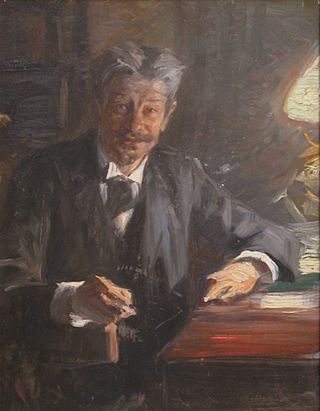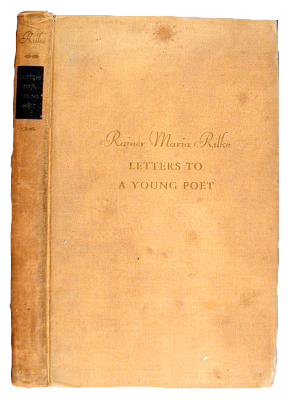This article needs additional citations for verification .(May 2015) |
Niels Lyhne is an 1880 novel written by the Danish author Jens Peter Jacobsen. [1]
This article needs additional citations for verification .(May 2015) |
Niels Lyhne is an 1880 novel written by the Danish author Jens Peter Jacobsen. [1]
A naturalistic work, Niels Lyhne is considered to be part of the Modern Breakthrough, a style of Realism native to Scandinavia; however, the novel does contain several romantic elements, and it relies and expands on romantic themes (examination of individual struggle and consciousness; artistic expression and inspiration), while it also ironizes them. The story chronicles the titular character's renunciation of his faith, his various bereavements and, ultimately, it depicts his disillusionment and his death. This disillusionment is part and parcel of the work's naturalism—focusing on his failures as a lover and as an artist, Niels Lyhne demonstrates the individual's helplessness and serves as a critique of atheism as well as faith.
Georg Lukács cites the novel in his influential Meaning of Contemporary Realism as the "first novel to describe this state of mind of the atheistic bourgeois intelligentsia". [2]
Rainer Maria Rilke, in Letters to a Young Poet , cites the Bible and Jacobsen's work as the two books most worth reading. Since a focus of Niels Lyhne is how the nonbeliever deals with death, in pairing this novel with the Bible, Rilke sets the unwary young poet upon the dialectic. Further, this work may be considered a forerunner of the existentialist novels of mid-20th century France.
The novel was translated as Siren Voices (1896) by Ethel F. L. Robertson (otherwise known by her nom de plume, Henry Handel Richardson). [3] A translation by Hanna Astrup Larsen was published in 1919, followed by a third translation in 1990 by Tiina Nunnally (Fjord Press, 1990; Penguin, 2006).

René Karl Wilhelm Johann Josef Maria Rilke, known as Rainer Maria Rilke, was an Austrian poet and novelist. Acclaimed as an idiosyncratic and expressive poet, he is widely recognized as a significant writer in the German language. His work is viewed by critics and scholars as possessing undertones of mysticism, exploring themes of subjective experience and disbelief. His writings include one novel, several collections of poetry and several volumes of correspondence.

Czech literature can refer to literature written in Czech, in the Czech Republic, or by Czech people.

Georg Philipp Friedrich Freiherr von Hardenberg, pen name Novalis, was a German aristocrat and polymath, who was a poet, novelist, philosopher and mystic. He is regarded as an influential figure of Jena Romanticism.

Ethel Florence Lindesay Richardson, known by her pen name Henry Handel Richardson, was an Australian author.

Georg Morris Cohen Brandes was a Danish critic and scholar who greatly influenced Scandinavian and European literature from the 1870s through the turn of the 20th century. He is seen as the theorist behind the "Modern Breakthrough" of Scandinavian culture. At the age of 30, Brandes formulated the principles of a new realism and naturalism, condemning hyper-aesthetic writing and also fantasy in literature. His literary goals were shared by some other authors, among them the Norwegian "realist" playwright Henrik Ibsen.

Holger Henrik Herholdt Drachmann was a Danish poet, dramatist and painter. He was a member of the Skagen artistic colony and became a figure of the Scandinavian Modern Breakthrough Movement.

The Notebooks of Malte Laurids Brigge, first published as The Journal of My Other Self, is a 1910 novel by Austrian poet Rainer Maria Rilke. The novel was the only work of prose of considerable length that he wrote and published. It is semiautobiographical and is written in an expressionistic style, with existentialist themes. It was conceptualized and written whilst Rilke lived in Paris, mainly inspired by Sigbjørn Obstfelder's A Priest's Diary and Jens Peter Jacobsen's Niels Lyhne.

Jens Peter Jacobsen was a Danish novelist, poet, and scientist, in Denmark often just written as "J. P. Jacobsen". He began the naturalist movement in Danish literature and was a part of the Modern Breakthrough.
Swedish literature is the literature written in the Swedish language or by writers from Sweden.

Assistens Cemetery in Copenhagen, Denmark, is the burial site of many Danish notables as well as an important greenspace in the Nørrebro district. Inaugurated in 1760, it was originally a burial site for the poor laid out to relieve the crowded graveyards inside the walled city, but during the Golden Age in the first half of the 19th century it became fashionable and many leading figures of the epoch, such as Hans Christian Andersen, Søren Kierkegaard, Christoffer Wilhelm Eckersberg, and Christen Købke are all buried here.

Modernist literature originated in the late 19th and early 20th centuries, and is characterised by a self-conscious separation from traditional ways of writing in both poetry and prose fiction writing. Modernism experimented with literary form and expression, as exemplified by Ezra Pound's maxim to "Make it new." This literary movement was driven by a conscious desire to overturn traditional modes of representation and express the new sensibilities of the time. The immense human costs of the First World War saw the prevailing assumptions about society reassessed, and much modernist writing engages with the technological advances and societal changes of modernity moving into the 20th century. In Modernist Literature, Mary Ann Gillies notes that these literary themes share the "centrality of a conscious break with the past", one that "emerges as a complex response across continents and disciplines to a changing world".

Danish literature stretches back to the Middle Ages. The earliest preserved texts from Denmark are runic inscriptions on memorial stones and other objects, some of which contain short poems in alliterative verse. In the late 12th century Saxo Grammaticus wrote Gesta Danorum. During the 16th century, the Lutheran Reformation came to Denmark. During this era, Christiern Pedersen translated the New Testament into Danish and Thomas Kingo composed hymns. Fine poetry was created in the early 17th century by Anders Arrebo (1587–1637). The challenges faced during Denmark's absolute monarchy in 1660 are chronicled in Jammersminde by Leonora Christina of the Blue Tower. Ludvig Holberg (1684–1754), influenced by the ideas of the Enlightenment and Humanism, is considered the founder of modern Danish and Norwegian literature. Neoclassical poetry, drama, and the essay flourished during the 18th century influenced by French and English trends. German influence is seen in the verse of the leading poets of the late 18th century such as Johannes Ewald and Jens Baggesen. Other 18th century writers include the hymn writer Hans Adolph Brorson and the satirical poet Johan Herman Wessel.

The Duino Elegies are a collection of ten elegies written by the Bohemian-Austrian poet Rainer Maria Rilke. He was then "widely recognized as one of the most lyrically intense German-language poets", and began the elegies in 1912 while a guest of Princess Marie von Thurn und Taxis at Duino Castle, on the Adriatic Sea. The poems were dedicated to the Princess upon their publication in 1923. During this ten-year period, the elegies languished incomplete for long stretches of time as Rilke had frequent bouts with severe depression—some of which were related to the events of World War I and being conscripted into military service. Aside from brief periods of writing in 1913 and 1915, he did not return to the work until a few years after the war ended. With a sudden, renewed burst of frantic writing which he described as a "boundless storm, a hurricane of the spirit"—he completed the collection in February 1922 while staying at Château de Muzot in Veyras, Switzerland. After their publication in 1923, the Duino Elegies were soon recognized as his most important work.

Letters to a Young Poet is a collection of ten letters written by Bohemian-Austrian poet Rainer Maria Rilke (1875–1926) to Franz Xaver Kappus (1883–1966), a 19-year-old officer cadet at the Theresian Military Academy in Wiener Neustadt. Rilke, the son of an Austrian army officer, had studied at the academy's lower school at Sankt Pölten in the 1890s. Kappus corresponded with the popular poet and author from 1902 to 1908 seeking his advice as to the quality of his poetry, and in deciding between a literary career or a career as an officer in the Austro-Hungarian Army. Kappus compiled and published the letters in 1929—three years after Rilke's death from leukemia.

Fennimore und Gerda is a German-language opera with four interludes, by the English composer Frederick Delius. It is usually performed and recorded in English, as Fennimore and Gerda in a translation by Philip Heseltine. The German libretto, by the composer himself, is based on the novel Niels Lyhne by the Danish writer Jens Peter Jacobsen. In neither German nor English is the libretto highly regarded; rather, the work is considered an "orchestral opera", limited in its dramatic appeal but voluptuous and engaging in its instrumental texture.
Niel Lynne is a 1985 Australian film about a young man during the 1960s.

Viggo Henrik Fog Stuckenberg was a Danish poet, notable for his lyrical and emotional poems. His work varied from faithful representation of nature in his early career to Expressionism and Realism. He befriended Sophus Claussen, Johannes Jørgensen and J. P. Jacobsen.
György Lukács was a Hungarian Marxist philosopher and literary critic.

György Lukács was a Hungarian Marxist philosopher, literary historian, literary critic, and aesthetician. He was one of the founders of Western Marxism, an interpretive tradition that departed from the Soviet Marxist ideological orthodoxy. He developed the theory of reification, and contributed to Marxist theory with developments of Karl Marx's theory of class consciousness. He was also a philosopher of Leninism. He ideologically developed and organised Lenin's pragmatic revolutionary practices into the formal philosophy of vanguard-party revolution.
J. R. R. Tolkien, the author of the bestselling fantasy The Lord of the Rings, was largely rejected by the literary establishment during his lifetime, but has since been accepted into the literary canon, if not as a modernist then certainly as a modern writer responding to his times. He fought in the First World War, and saw the rural England that he loved built over and industrialised. His Middle-earth fantasy writings, consisting largely of a legendarium which was not published until after his death, embodied his realism about the century's traumatic events, and his Christian hope.